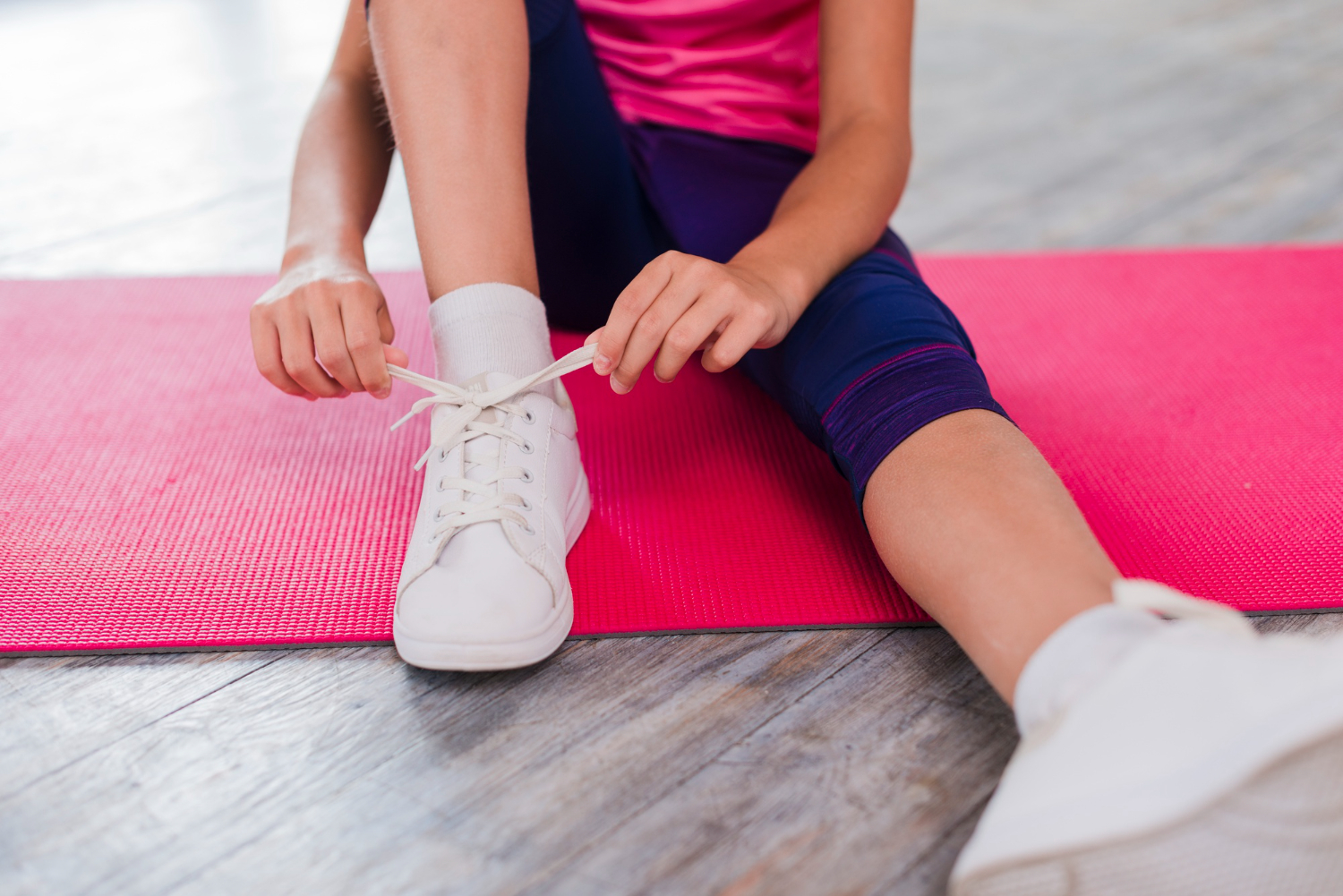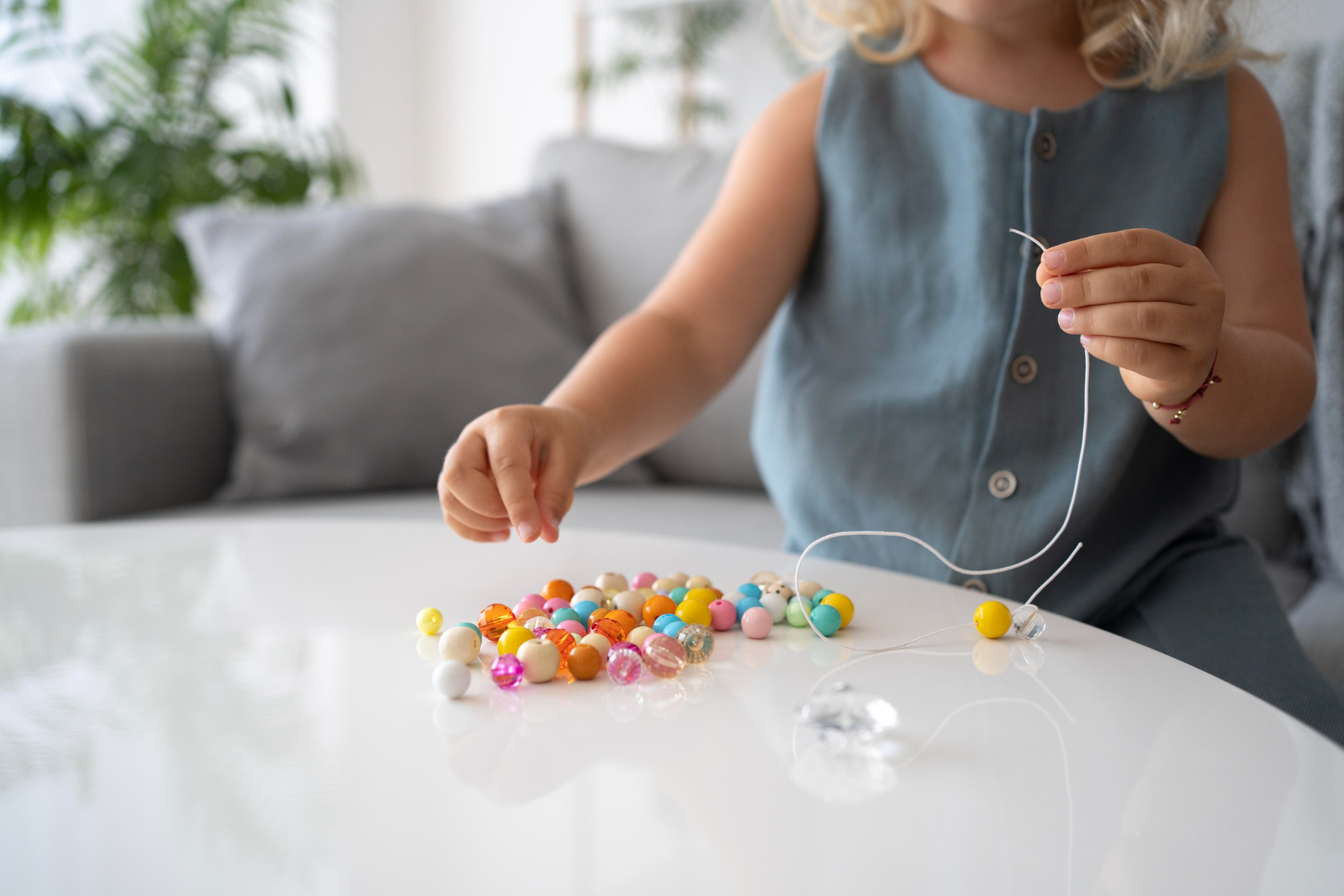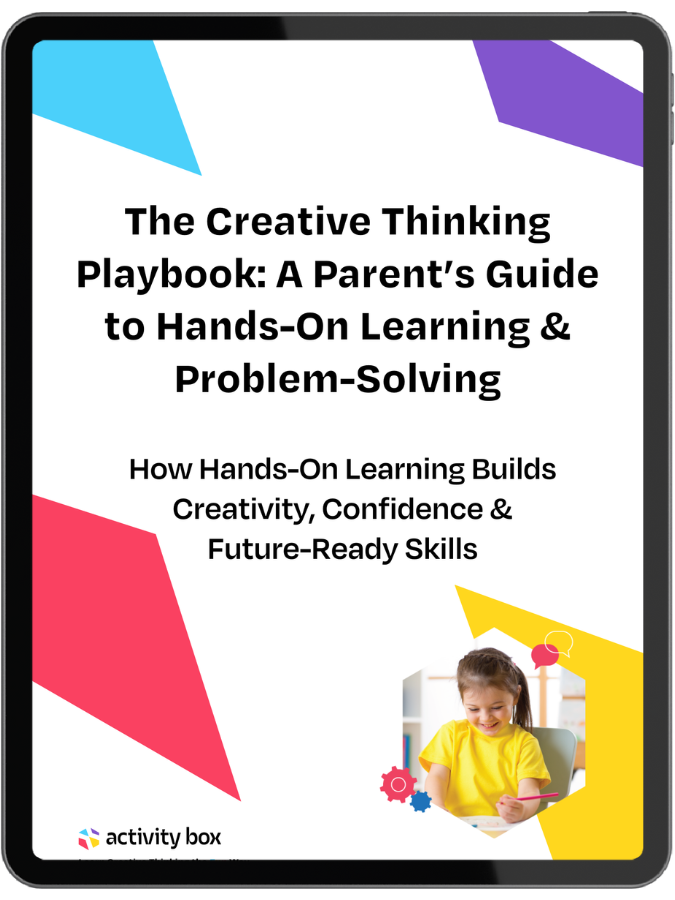
What Are Fine Motor Skills? Definition & Milestones
What Are Fine Motor Skills and Why Do They Matter?
| Aspect | Summary |
|---|---|
| Definition | Fine motor skills involve small muscle control in hands and fingers. |
| Why They Matter | Critical for independence, writing, self-care, and cognitive growth. |
| Developmental Window | Builds steadily from toddler years through early primary school. |
| Signs of Delay | Difficulty with grasping, buttoning, or cutting tasks. |
| Ways to Build Skills | Hands-on crafts, sensory games, and everyday object manipulation. |
Understanding the Basics: What Are Fine Motor Skills?
Fine motor skills refer to the precise movements of the small muscles in the hands, fingers, and wrists, movements we use to write, eat, button clothes, and play with blocks.
Tip for Parents:
Fine motor development is a core milestone in early childhood, affecting not just writing but also self-care and school readiness.
Unlike large movements like jumping or running (gross motor skills), fine motor movements are subtle but crucial. From holding a pencil to zipping a backpack, children rely on these skills every day.
According to CDC developmental milestones, fine motor growth begins as early as infancy, when babies reach for toys or hold your finger, and continues rapidly through preschool and early elementary years.
Hong Kong’s EDB’s overview of fine motor development across the lifespan reinforces that small muscle control supports independence and learning across all age stages.
Why Fine Motor Skills Matter in Early Childhood
When children struggle with tasks like cutting paper, drawing, or using utensils, they may feel discouraged and frustrated. Over time, this can affect their confidence, participation, and even classroom performance.
According to NAEYC’s principles linking fine motor skill development with cognitive and emotional growth, motor skill development is deeply intertwined with a child’s cognitive, social, and emotional growth.
Well-developed fine motor skills enable:
Independent self-care (feeding, brushing teeth, dressing)
Better handwriting and pre-literacy skills
Participation in group play and arts-based activities
Greater persistence and task-following ability
The importance of small muscle control becomes especially clear around ages 4–6, when early writing and classroom expectations begin.
Explore the link between fine motor skills and school success
Fine vs. Gross Motor Skills: What’s the Difference?
| Skill Type | Examples | Muscles Used |
|---|---|---|
| Fine Motor Skills | Holding a crayon, buttoning a shirt | Fingers, hands, wrists |
| Gross Motor Skills | Running, hopping, catching a ball | Arms, legs, torso |
Development in both areas is essential. But fine motor skills are often harder to spot until a child is expected to sit, draw, or write for extended periods.
Encouraging both types of movement ensures balanced growth and prepares children for both physical activity and academic challenges.
Common Developmental Milestones by Age
Knowing when and how fine motor skills typically emerge can help parents spot strengths or areas for support.
| Age Range | Typical Fine Motor Skills |
|---|---|
| 2–3 years | Turns pages, scribbles, stacks blocks |
| 3–4 years | Uses scissors, draws simple shapes |
| 4–5 years | Buttons clothes, copies letters and numbers |
| 5–6 years | Prints own name, ties shoelaces |
| 6–7 years | Writes sentences, cuts complex shapes, builds detailed models |
| 8+ years | Uses tools accurately (ruler, stapler), maintains legible handwriting |
Keep in mind: Every child develops at their own pace. Look for gradual improvement and enjoyment of hands-on tasks.
Delays in fine motor skill development aren’t always a cause for concern, but consistent difficulty may warrant extra support or guidance from a pediatrician or occupational therapist.

Everyday Activities That Build Fine Motor Control
You don’t need fancy tools or formal classes to support your child’s fine motor growth. Daily tasks offer plenty of opportunities for practice.
Try These:
Sorting coins or small buttons
Threading pasta or beads onto yarn
Peeling stickers or opening containers
Using tongs or tweezers for sensory play
NAEYC’s guide to building fine motor strength and coordination recommends consistent, playful tasks using everyday materials to build control and confidence.
Hong Kong EDB’s pre‑primary curriculum guide recommends fine motor‑building activities like threading, puzzles, and playdough to foster creativity and muscle coordination in early learners.
The key is repetition and variety: changing materials, settings, and levels of challenge to keep children engaged.

Get the Free Playbook for Easy Fine Motor Activities
Learn how hands-on play helps your child develop problem-solving, creativity, and confidence, without screen time or prep.
Hands-on, screen-free activities
Printable planner included
Stress-free and fun for parents
Expert-designed, child-approved
Help Your Child Build Confidence Through Fine Motor Play
It’s easy to overlook just how hard it is to tie shoes, open lunchboxes, or write a name. But these tasks are huge milestones for young kids.
Here’s how you can help:
Encourage your child to try new hand-based tasks (even if messy!)
Praise their effort, not just results
Keep tools like crayons, scissors, and tweezers accessible
Use screen-free time for puzzles, crafts, and tactile play
Want a ready-made way to build these skills at home?
👉 Join ActivityBox for monthly activity kits that support fine motor, problem-solving, and creativity, without any prep required.
FAQs About Fine Motor Skills Development
How can I tell if my child is behind in fine motor development?
Look for signs like avoiding puzzles, struggling with dressing, or frustration during crafts. If concerns persist, consult your pediatrician.
Are fine motor skills more important than gross motor skills?
Both are essential. Gross motor builds physical coordination, while fine motor supports school tasks and independence.
At what age should kids start cutting with scissors?
Many begin safely exploring scissors around age 3–4, starting with snipping paper strips and progressing to shapes.
Can screen time impact fine motor development?
Yes. Excessive screen time may limit hands-on play opportunities. Encourage tactile, creative tasks during off-screen hours.
How can ActivityBox support my child’s motor skill growth?
Every box includes tools and guided activities that encourage cutting, shaping, building, and more all designed by educators to develop small muscle control naturally.
How do I join?
Have more questions?
We’re here to help! Contact us .
